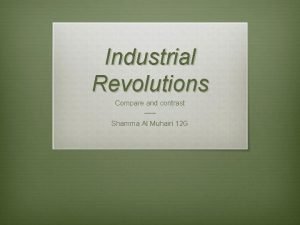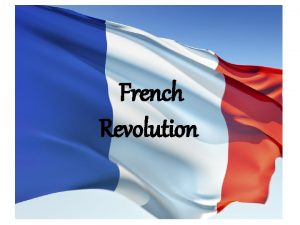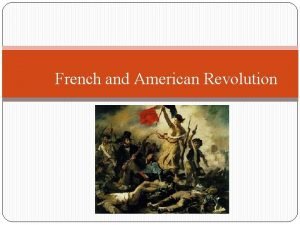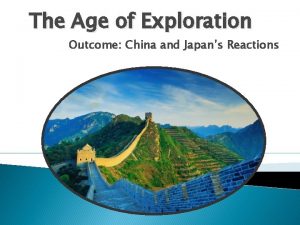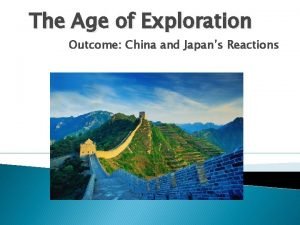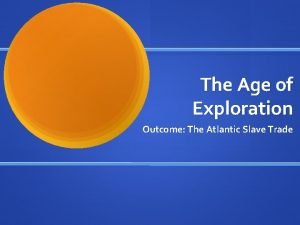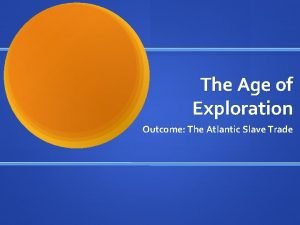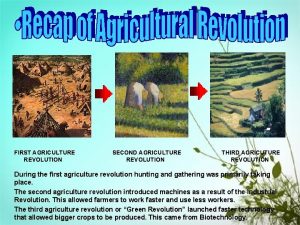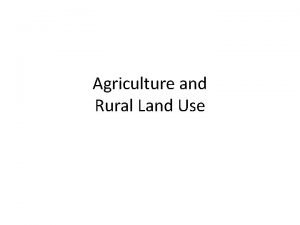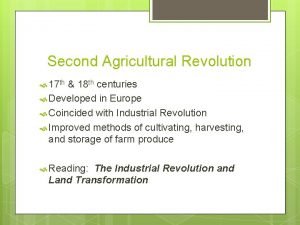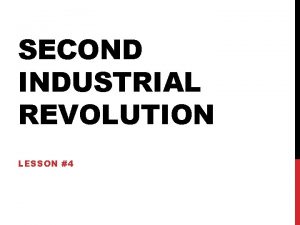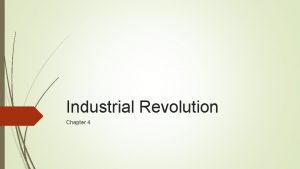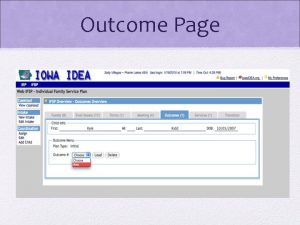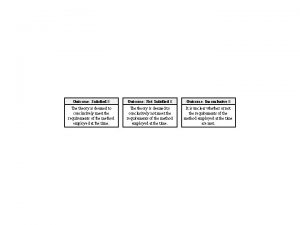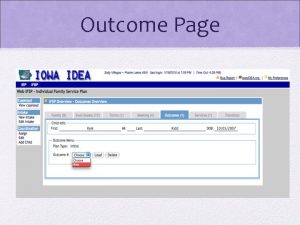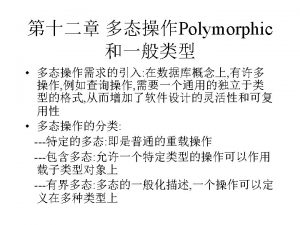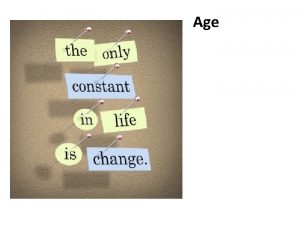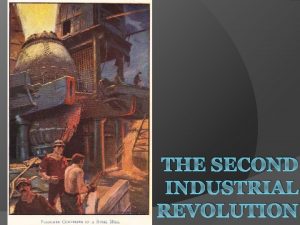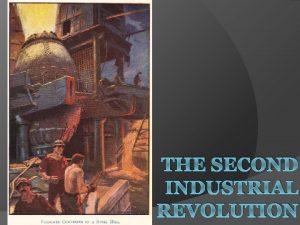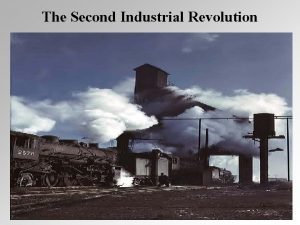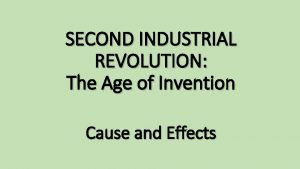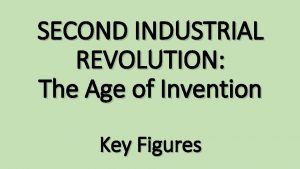The Industrial Age Second Industrial Revolution Outcome 7



















- Slides: 19

The Industrial Age (Second Industrial Revolution) Outcome: 7 Factors of America’s Industrial Growth


Setting the Stage: The U. S. has enjoyed many distinct advantages many other countries lack b. Democracy and Capitalism allow for a prosperous nation c. Unity following the Civil War along with Industrialization fever led America to evolve into a super producer a.


1. Natural Resources: Become goods a. Raw Materials – coal, iron ore, timber b. Fertile soil ‐> ‐‐ surplus agriculture ‐‐> ‐‐‐‐‐‐Industrial ‐‐‐‐ Revolution c. Swift moving water = power & transportation

2. Capital ($) Needed to pay for the production of goods Stable currency = safe buying and selling (commerce) b. Corporations formed to raise money through the sale of stock c. Bank loans = start‐‐‐ up for factories and businesses a.

3. Labor Supply: Used to make goods a. High birth rate b. Immigration from Europe and Asia c. Women & Children

4. Technology: Better ways to make more & better goods a. Telephone = better & faster communication b. Electricity = more production power c. Factory system = faster production i. Interchangeable parts ‐‐> ‐‐‐‐‐‐Assembly ‐‐‐‐‐‐‐ line ii. Examples Today: Cars, computers, houses d. New inventions = more & better goods


5. Consumers: Bought & used goods & services a. Mail order catalogues expanded sales of goods (Wards & Sears) b. Department stores became common in large cities. c. Overseas Markets = Exports to other countries = mores sales

6. Transportation: Linked raw materials to factories & factory goods to consumer markets a. River & canals b. Roads c. Railroads (By 1900 5 Transcontinental Systems in U. S. )


7. Government Cooperation a. b. c. d. e. High tariffs (tax on imports) > ‐‐‐ Buying American goods Patent System protected & encouraged inventions No Interstate Tax = Free Trade (Rural Free Delivery) Land Grants to railroads encouraged westward growth Laissez‐‐‐ Faire philosophy = Hands‐‐‐Off(limited) Government

Result: Due to these 7 factors coupled with our strong democratic & capitalistic beliefs, America was primed to become an economic superpower in the next 50 years. However, economic power does not come without its share of problems and those who are able to exploit the laissez‐‐‐faire system.

1. List 3 natural resources the US had existing in the US. 2. US Labor supply was impacted strongly by immigration but US companies also hired ______ and _____ for cheap labor. 3. What is the importance of the assembly line? 4. What is a ‘tariff’? 5. What is Laissez Faire government?

The Gilded Age ¥ The Gilded Age Historians sometimes refer to the Second Industrial Revolution as the “Gilded Age” ¥ A gilded surface has a thin layer of gold on top concealing a less expensive metal beneath ¥ Phrase taken from Mark Twain ¥ Humorously criticized greed and corruption in American society ¥

Social Darwinism ¥ Philosophy that the most successful individuals were those endowed with superior talents who had the ability to adapt, survive, and thrive ¥ Wealthy people often viewed poverty as the fault of the poor themselves rather than as the product of circumstances or of injustices in the social system

Florida History ¥ Henry Morrison Flagler (1830 -1913) Partner of John D. Rockefeller in the creation of Standard Oil ¥ In 1887 and 1888, he built the Ponce de Leon Hotel (now Flagler College) and other luxury hotels in Palm Beach and Miami, forming the basis for the tourism industry ¥ “Father of Miami” ¥

Henry Morrison Flagler
 Manet, olympia, 1863
Manet, olympia, 1863 First and second industrial revolution
First and second industrial revolution Iron age bronze age stone age timeline
Iron age bronze age stone age timeline Iron age bronze age stone age timeline
Iron age bronze age stone age timeline French revolution
French revolution American revolution effects
American revolution effects The age of exploration outcome china and japan's reactions
The age of exploration outcome china and japan's reactions Japan during the age of exploration
Japan during the age of exploration The age of exploration outcome the atlantic slave trade
The age of exploration outcome the atlantic slave trade The age of exploration outcome the atlantic slave trade
The age of exploration outcome the atlantic slave trade 186 282 miles per second into meters per second
186 282 miles per second into meters per second Agricuture jobs
Agricuture jobs 1 hectare size
1 hectare size Edge city ap human geography
Edge city ap human geography The second agricultural revolution coincided with
The second agricultural revolution coincided with Peripheral model
Peripheral model Russian revolution vs french revolution
Russian revolution vs french revolution Economic causes of french revolution
Economic causes of french revolution Modern commercial agriculture
Modern commercial agriculture Bone age greater than chronological age
Bone age greater than chronological age

